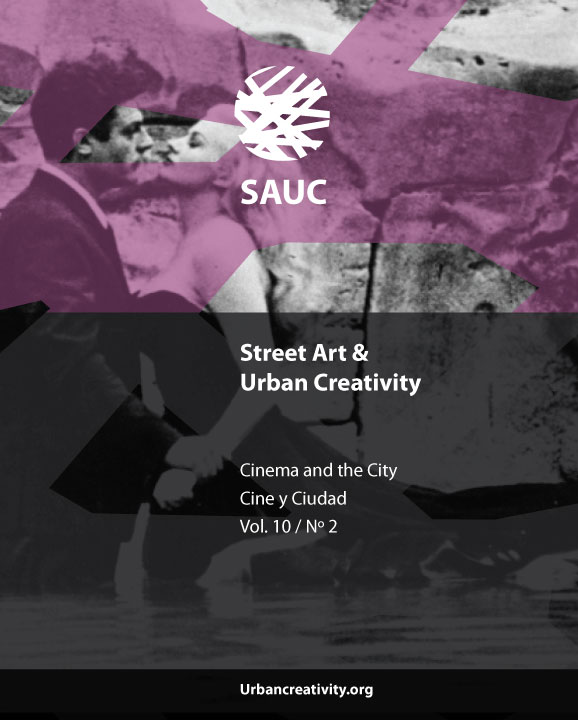From Streets to Screens
the Entangled Histories of the Medium of Film and Parisian Streets
DOI:
https://doi.org/10.25765/sauc.v10i2.968Keywords:
Street, city symphony film, French avant-garde film, lived experience, urban artAbstract
What is the relationship between city and film? This relationship is crucial to the 1920s and 1930s city symphonies. Recent scholarship confirms that these films form a distinct genre due to their relation with the city. This article argues that to better understand the relation between city and film, including in the city symphony genre, we need to explore in more detail those specific aspects of the city that become entangled with film. I ask: in which ways is the medium of film entangled with the lived experience of the city, more specifically to the history of the material reality of city streets? Paris’ transformation by Haussmann in the mid-19th century serves as the defining moment that changed the lived experience of Parisian city dwellers. Walter Benjamin notices how this change to urbanity impacted art as manifested in Charles Baudelaire's poetry. Expanding on this idea, I turn my attention to film and explore the ways in which it responded to the changed streets of Paris through its medium. Alberto Cavalcanti’s Rien Que les Heures (1926), a Paris city symphony, is key. Jean-Luc Godard’s À Bout de Souffle (1960) is a later point in the history of film's entanglement with Parisian streets. By looking more closely at how the cinematic medium integrates into its mechanism the space-time of city streets, this article offers further insights on the relationship between art and street, here more specifically between film in relation to the fate of the streets in Paris. We do not need to watch films about the city to experience it, in many ways the medium of film itself integrated and paralleled the experience of the city and its modern urban streets. Based on this, if the city symphony is indeed a film genre based on its distinctive relationship to the city, it compels ‘genre’ to engage medium among its formal parameters.
Downloads
Global Statistics ℹ️
|
238
Views
|
160
Downloads
|
|
398
Total
|
|
Downloads
Published
How to Cite
Issue
Section
License
Those authors who publish in this journal accept the following terms:
-
Authors retain copyright.
-
Authors transfer to the journal the right of first publication. The journal also owns the publishing rights.
-
All published contents are governed by an Attribution-NoDerivatives 4.0 International License.
Access the informative version and legal text of the license. By virtue of this, third parties are allowed to use what is published as long as they mention the authorship of the work and the first publication in this journal. If you transform the material, you may not distribute the modified work. -
Authors may make other independent and additional contractual arrangements for non-exclusive distribution of the version of the article published in this journal (e.g., inclusion in an institutional repository or publication in a book) as long as they clearly indicate that the work was first published in this journal.
- Authors are allowed and recommended to publish their work on the Internet (for example on institutional and personal websites), following the publication of, and referencing the journal, as this could lead to constructive exchanges and a more extensive and quick circulation of published works (see The Effect of Open Access).













